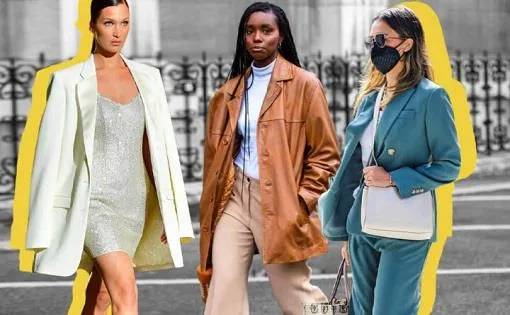- Get link
- X
- Other Apps
- Get link
- X
- Other Apps
International fashion weeks are trendsetting events. They have a profound influence on the fashion industry, with several key ways they impact the trends for the upcoming seasons:
1. Trend Forecasting: Fashion weeks are the launchpad for
fashion trend forecasting. Experts analyze the collections, identifying
recurring themes, colors, fabrics, and silhouettes that will shape future
fashion. Trend reports are published, guiding designers, retailers, and
consumers.
2. Street Style: Fashion weeks are as much about the
attendees as the runway shows. Street style photographers capture the unique
and bold outfits of influencers, editors, and attendees. These street style
looks often become trends themselves, influencing the way people dress in daily
life.
3. Influencing Retail: Fashion buyers attend these events to
decide which collections to stock in their stores. The runway shows directly
impact what consumers will find on the racks of boutiques and department stores
in the upcoming seasons.
4. Social Media: Social media platforms like Instagram have
become an integral part of fashion week coverage. Designers, models,
influencers, and attendees share real-time updates, making the trends and
designs instantly accessible to a global audience.
5. Celebrity Endorsement: Celebrities often sit front row at
fashion shows and wear pieces from the collections. Their influence can
significantly boost the desirability of certain brands and styles, especially
when they're seen wearing them on the red carpet.
Supporting Emerging Designers:
International fashion weeks are not just showcases for
established designers but also platforms for emerging talent. Fashion weeks
like LFW and events such as the CFDA/Vogue Fashion Fund in New York provide
opportunities for young, innovative designers to gain recognition and grow
their brands.
Networking and Collaboration:
Fashion weeks are more than just runways and after-parties;
they are also hubs for networking and collaboration. Designers, models,
stylists, photographers, and industry professionals from around the world come
together to exchange ideas, form partnerships, and explore creative
collaborations.
Sustainability and Ethical Fashion:
In recent years, the fashion industry has increasingly
focused on sustainability and ethical practices. Fashion weeks have adapted to
these concerns by featuring eco-friendly and sustainable collections. Events
like the Green Carpet Fashion Awards in Milan celebrate sustainable fashion and
encourage environmentally responsible practices in the industry.
Inclusivity and Diversity:
Fashion weeks have also worked towards greater inclusivity
and diversity. Initiatives like the British Fashion Council's "Positive
Fashion" campaign and the 15 Percent Pledge have sought to promote more
diverse representation in the fashion industry, from runway models to
designers.
Challenges and Adaptations:
Fashion weeks have faced challenges, including the rise of
fast fashion, the impact of the COVID-19 pandemic, and changing consumer
preferences. To adapt, many fashion weeks have incorporated digital elements,
offering live streaming of shows, virtual showrooms, and other online
experiences to engage a broader audience.
Future of Fashion Weeks:
The future of international fashion weeks is dynamic and
evolving. As the fashion industry continues to address pressing issues such as
sustainability, inclusivity, and the digitization of fashion, fashion weeks
will likely adapt to remain relevant and influential. Here are some potential
directions for the future of fashion weeks:
1. Hybrid Events: Combining physical and virtual elements to
reach a broader audience, enhance accessibility, and reduce environmental
impact.
2. Sustainability: An increased focus on sustainable
practices, from materials and production to show logistics, to align with
evolving consumer values.
3. Digital Experiences: Interactive and immersive digital
experiences that allow consumers to engage with collections in new ways, from
augmented reality to virtual showrooms.
4. Inclusivity: Continued efforts to promote diversity and
inclusivity within the fashion industry, both on the runway and behind the
scenes.
Political Statements through Fashion: The Red Bonnet
One of the most iconic fashion statements of the French
Revolution was the red Phrygian bonnet, also known as the liberty cap. This cap
was worn as a symbol of the revolution's ideals, and it became synonymous with
the call for liberty and the rejection of monarchy. The simple, red cap was a
powerful visual representation of the revolutionary spirit.
Post-Revolutionary France: The Empire Waist
Following the turbulent period of the French Revolution,
France entered the Napoleonic era. Fashion during this time underwent another
transformation, as the empire waist dress became popular. This style featured a
high waistline, just below the bust, and a column-like silhouette that was
inspired by classical Greek and Roman clothing. The empire waist dress was a
stark departure from the earlier fashions, emphasizing a simpler, more modest
look.
Empress Joséphine, the wife of Napoleon Bonaparte, played a
significant role in popularizing this style. Her preference for the empire
waist dress had a considerable influence on European fashion trends. This
period also saw the revival of lighter, pastel colors and neoclassical motifs,
further distancing itself from the elaborate styles of the ancien régime.
The Victorian Era: Mourning Attire and Social Norms
The 19th century saw the Victorian era usher in a range of
fashion trends influenced by historical events. One such trend was the
prominence of mourning attire, which was a direct response to the death of
Prince Albert and the Queen's perpetual mourning. Mourning clothing was
characterized by its somber colors and heavy use of black fabric, including
crepe, as a symbol of grief and respect for the deceased.
Social norms and propriety also played a significant role in
Victorian fashion. Women were expected to adhere to strict codes of modesty,
with clothing that concealed the body. Corsets, hoop skirts, and layers of
fabric defined the feminine silhouette. These sartorial expectations reflected
the conservative values of the time, with an emphasis on morality and
propriety.
- Get link
- X
- Other Apps
